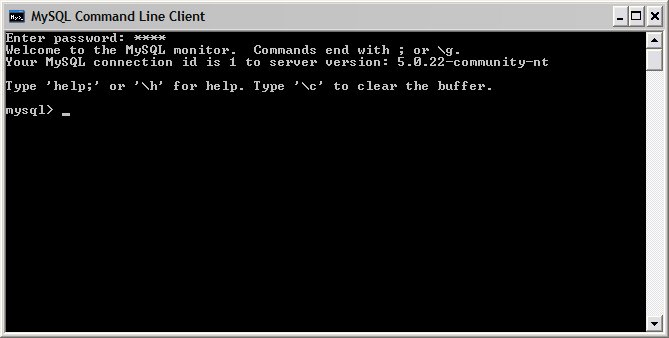
#Mysql command how to#
In this tutorial, you have learned how to show all databases in the MySQL server using the SHOW DATABASES command or querying from the schemata table in the information_schema database. To Import: mysql -u username -p databasename < file.
#Mysql command password#
It returns the following result set: + -+ For Export: mysqldump -u username -p password dbname > filename. The following SELECT statement returns databases whose names end with 'schema' or 's'. Finding the connection information for a MySQL DB instance Connecting from the MySQL command-line client (unencrypted) Connecting from MySQL Workbench. If the condition in the LIKE clause is not sufficient, you can query the database information directly from the schemata table in the information_schema database.įor example, the following query returns the same result as the SHOW DATABASES command. Querying database data from information_schema It is important to note that if the MySQL database server started with -skip-show-database, you cannot use the SHOW DATABASES statement unless you have the SHOW DATABASES privilege. If you want to query the database that matches a specific pattern, you use the LIKEclause as follows: SHOW DATABASES LIKE pattern įor example, the following statement returns database that ends with the string 'schema' SHOW DATABASES LIKE '%schema' Once at the mysql command prompt you can execute SQL statements as well as commands specific to the mysql utility. Database and Table Creation In the example appearing here, we are creating a database called Students and then creating associated tables. mysqldump -u root -p menagerie1 > menagerie1dbbackup.sql mysqldump -u. OPTIONS -u root connect to the MySQL server as the root account. For example, run the below commands to back up the menagerie1 and menagerie2 databases individually.

The SHOW SCHEMAS command is a synonym for SHOW DATABASES, therefore the following command returns the same result as the one above: SHOW SCHEMAS mysqldump OPTIONS databasename > backupfile.sql. To list all databases on a MySQL server host, you use the SHOW DATABASES command as follows: SHOW DATABASES Ĭode language: SQL (Structured Query Language) ( sql )įor example, to list all database in the local MySQL database server, first login to the database server as follows: >mysql -u root -pĪnd then use the SHOW DATABASES command: mysql> SHOW DATABASES Currently, many popular PHP applications use MySQL Server for data storage. Summary: in this tutorial, you will learn how to use the MySQL SHOW DATABASES command to list all databases in a MySQL database server. Introduction While Microsoft SQL Server 2008 is the recommended database to use when hosting PHP applications on an Internet Information Services 7 (IIS 7) and above Web server, you can also use MySQL as the database.


 0 kommentar(er)
0 kommentar(er)
